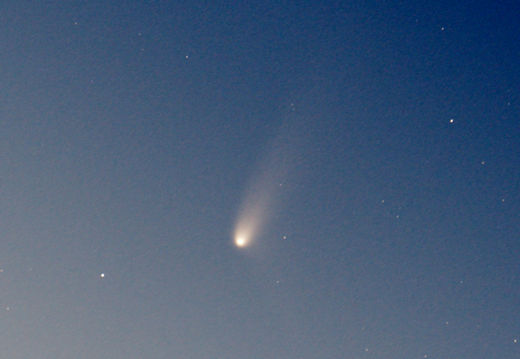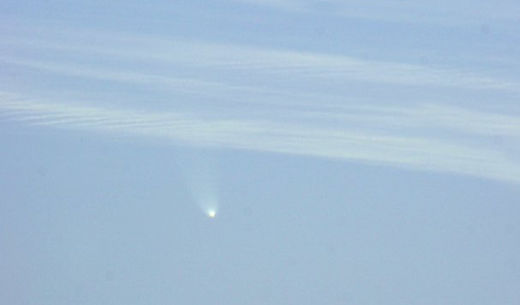AURORAS LOVE EQUINOXES: The northern autumnal equinox is only two days away. That's good news for sky watchers because auroras love equinoxes. Researchers call it the "Russell-McPherron effect." At this time of year, cracks form in Earth's magnetic field, opening the door for solar storms. Even a weak stream of solar wind or a glancing blow from a CME can spark a good display. Happy autumn! Aurora alerts: SMS Text
COMET TSUCHINSHAN-ATLAS HAS RETURNED: Comet Tsuchinshan-ATLAS (C/2023 A3) has just emerged from behind the sun, and its appearance has astronomers buzzing with anticipation. "The comet is brightening rapidly," says Australian astrophotographer Michael Mattiazzo, who has been monitoring the comet in dawn twilight:

Comet Tsuchinshan-ATLAS on Sept. 17th in dawn twilight over Swan Hill, Australia
"The comet was only 6 degrees above the horizon when I photographed it on Sept. 17th," says Mattiazzo. "Using 15x70mm binoculars, I estimated its visual magnitude to be +4.3."
This is very good news. Some astronomers predicted Comet Tsuchinshan-ATLAS would fall apart during its transit behind the sun. The fact that it is still intact and healthy means we could witness a bright naked-eye comet next month.
"Prospects remain excellent for a visually impressive evening display in mid-October," says Qicheng Zhang of the Lowell Observatory. "Weather permitting, the entire Northern Hemisphere should be able to see Comet Tsuchinshan-ATLAS."
Nick James of the British Astronomical Association just wrote an article anticipating the bright comet. "It makes its closest approach to Earth on October 12 when it will be 0.47 au away in the constellation of Virgo," he says. "There is a possibility that the comet will be at a negative magnitude as it emerges into the evening sky from Oct. 10th onwards."

Comet McNaught photographed in daylight by Thorsten Boeckel on Jan. 13, 2007. [gallery]
"Negative magnitude" means the comet could be visible in broad daylight, especially on Oct. 9th when light from the nearby sun will be forward scattered by comet dust, amplifying the comet's brightness. "[Daylight photography of the comet] should only be attempted if you know what you are doing," cautions James. "The sun will be very close by and this is potentially a very dangerous observation, similar to observing Venus at inferior conjunction."
It's been done before, though. Witness daylight Comet McNaught in 2007. Stay tuned for updates as Comet Tsuchinshan-ATLAS approaches Earth.
Realtime Comet Photo Gallery
Free: Spaceweather.com Newsletter
Nessun commento:
Posta un commento